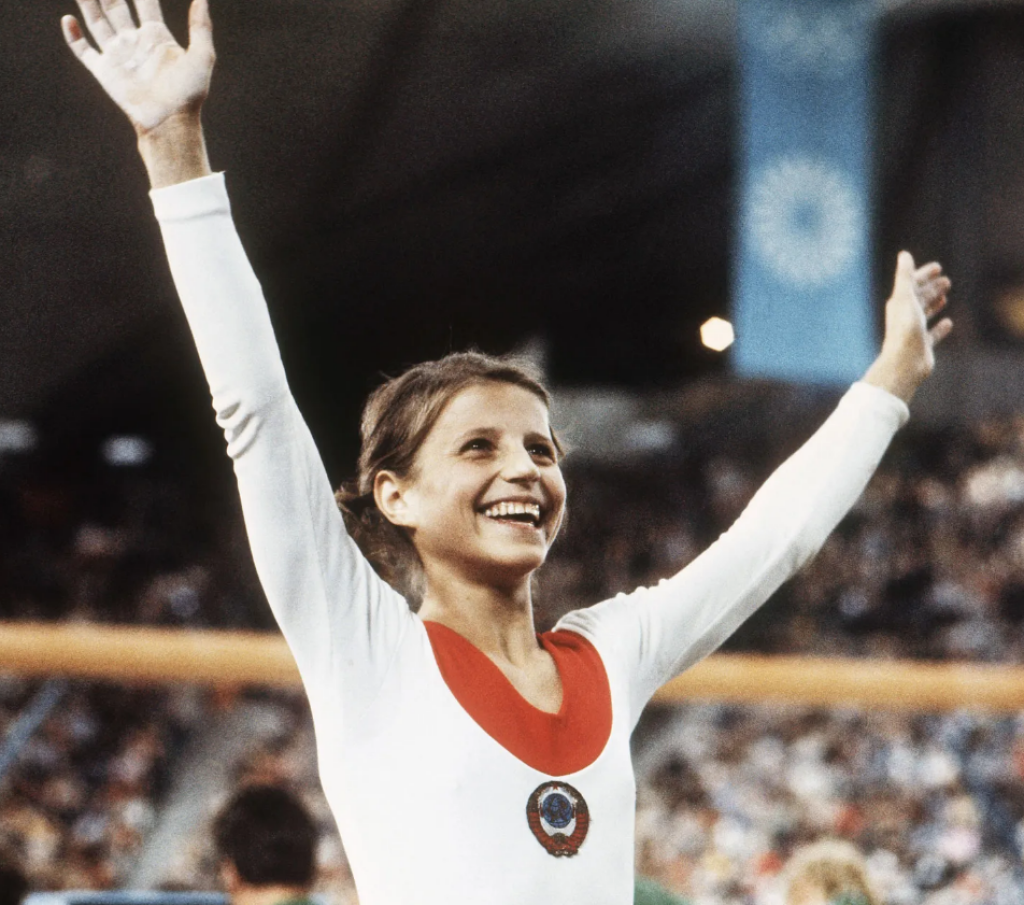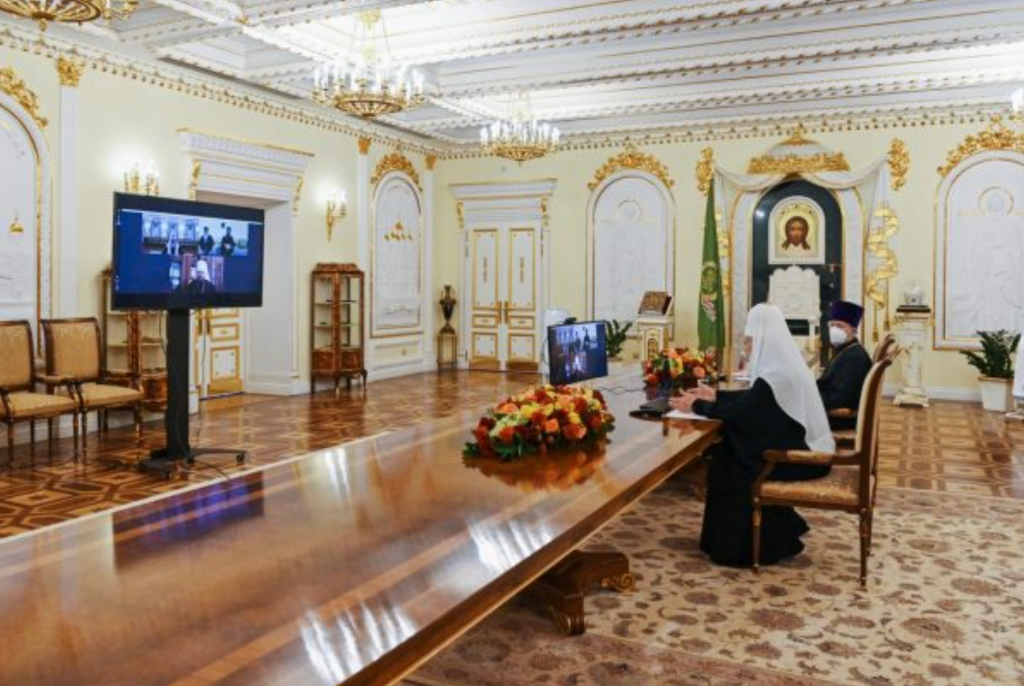The Jordan Center stands with all the people of Ukraine, Russia, and the rest of the world who oppose the Russian invasion of Ukraine. See our statement here.
Timur Mukhamatulin is a PhD candidate in the Department of History at Rutgers University. He is completing his dissertation on the history of Soviet women's gymnastics, which reflects on relations among Soviet sports, gender, and the idea of socialist utopia.
Cold War sports was never just about sports. It was a way for competing ideological powers—mainly the United States and the USSR—to showcase their supposed superiority and try to win the hearts and souls of the public on the other side of the Iron Curtain. In the 1970s, the Soviet Union produced a true world star: Olga Korbut, a young gymnast from Belarus who gained fame as the first smiling Soviet athlete. As the Soviet state turned Korbut into a global celebrity, it capitalized more on her charm and delicately feminine frame than on the breathtakingly difficult moves she was able to perform. This strategy illustrates a shift in Soviet gender norms, toward more conservative and traditional understandings of womanhood.
Korbut’s first moment of glory was her showing at the 1972 summer Olympics in Munich. Spectators the world over watched with bated breath as the young woman wearing a Soviet team leotard performed an extremely difficult routine: a backflip on the uneven bar and then the lower bar, executed under conditions of perfectly kept poise. But this was not all. Korbut instantly endeared herself to spectators by waving to them and greeting them with an open smile. When she made mistakes during a performance on her favorite piece of equipment—the uneven bars—only to receive low grades from the referees, Korbut burst into tears.
The young Soviet athlete’s performance disarmed even critically minded Western journalists. Some observers called her the “world's darling” and a “Soviet pixie,” while others praised Korbut’s “feminine charm”. Korbut’s smile was not a gift of nature: as she herself recalled in her 1987 memoir, Zhila-byla devochka [Once Upon a Time There Was a Girl], it was her coach, Renald Knysh, who had devoted countless hours teaching her how to win over her public and make the smile a central part of her performance. This self-presentation stood in stark contrast to previous images of Soviet female athletes who impressed with displays of concentrated muscular force, showing virtually no emotions in public.
Soviet sports officials, normally cautious about their athletes’ popularity abroad, immediately began promoting Korbut on the international stage. In March 1973, less than a year after the Olympics, Korbut dominated media headlines when the Soviet women’s gymnastics team toured the United States. The trip’s sponsor, the jewelry maker Fabergé, featured Korbut ahead of all other athletes in a promotional brochure, her smile beaming from numerous photos. While the Soviets did not compete against the US gymnastics team during the tour, their performances packed audiences in New York’s Madison Square Garden and Houston’s Astrodome. A reporter for Sports Illustrated observed crowds of mostly teenage viewers roaring “We want Olga!” as if she were a rock star. At airports across the United States, fans welcomed Korbut with posters reading “We greet the Olympic champions led by brilliant Olga."
It was Korbut’s feminine appearance that fueled popular American interest in the 1973 tour, which the Soviet state tolerated. Sports officials responsible for the tour permitted press conferences for Korbut, which turned into fora of discussing her "feminine charm." Even specialized journals like Sports Illustrated embraced this narrative. The paper’s reporter went to great lengths to quote Korbut’s press conference responses to “girly” questions about her favorite flowers (roses) and boyfriends (she had none). Korbut herself participated in this game. In her memoirs, she recalled a dress that had captured her attention in a fashion store in Atlanta. Korbut understood that it was a wedding dress. Though she had no intention of getting married any point soon, she liked the dress so much she decided to buy it. An unnamed company paid for her dress and presented it to Korbut as a gift in front of cameras. For some time, as Korbut pointed out, the first lines of newspapers were full of rumors about her future marriage.
Korbut’s U.S. tour was considered so significant that President Richard Nixon invited the Soviet women's gymnastics team to the White House. Unsurprisingly, his first interlocutor during the meeting was Korbut. The young gymnast in pigtails, with her charming smile, was the second Soviet woman to be received by a U.S. President—not as a wife of a Soviet leader, but as a celebrity in her own right. (The first had been the sniper Liudmila Pavlichenko, who had killed more than three hundred Axis soldiers during the Second World War and toured the United States in November 1942.) Korbut would go on to visit numerous countries throughout her career, including ones with virtually no gymnastics tradition, like Malaysia or pre-revolutionary Iran.
In order to affirm Olga Korbut’s global celebrity, Soviet media eagerly informed their domestic readers and viewers about the gymnast’s popularity abroad. The 1977 Soviet book called Olga Korbut celebrated the gymnast’s career, quoting letters from Westerners who praised her charm and noted that Korbut defied Western conceptions of dour Soviet people. A letter writer introduced as “Mike Clinton from Iowa” wrote that, while watching coverage of Korbut’s visit to the White House, he was surprised to see “that you Russians also have a sense of humor.” “Dave from Texas” went even further, saying that “a lot of people on Earth—suffering from war and hatred—need your smile and charm right now."
Korbut’s image was so influential for American sports followers that, in 1994, long after she had retired, and in the wake of the Soviet Union’s collapse, Sports Illustrated included Korbut in its list of forty athletes who had altered sports over the course of the magazine’s forty years of existence. An article honoring Korbut declared that “this little Russian girl" put "a different, human face on her Communist country.”



